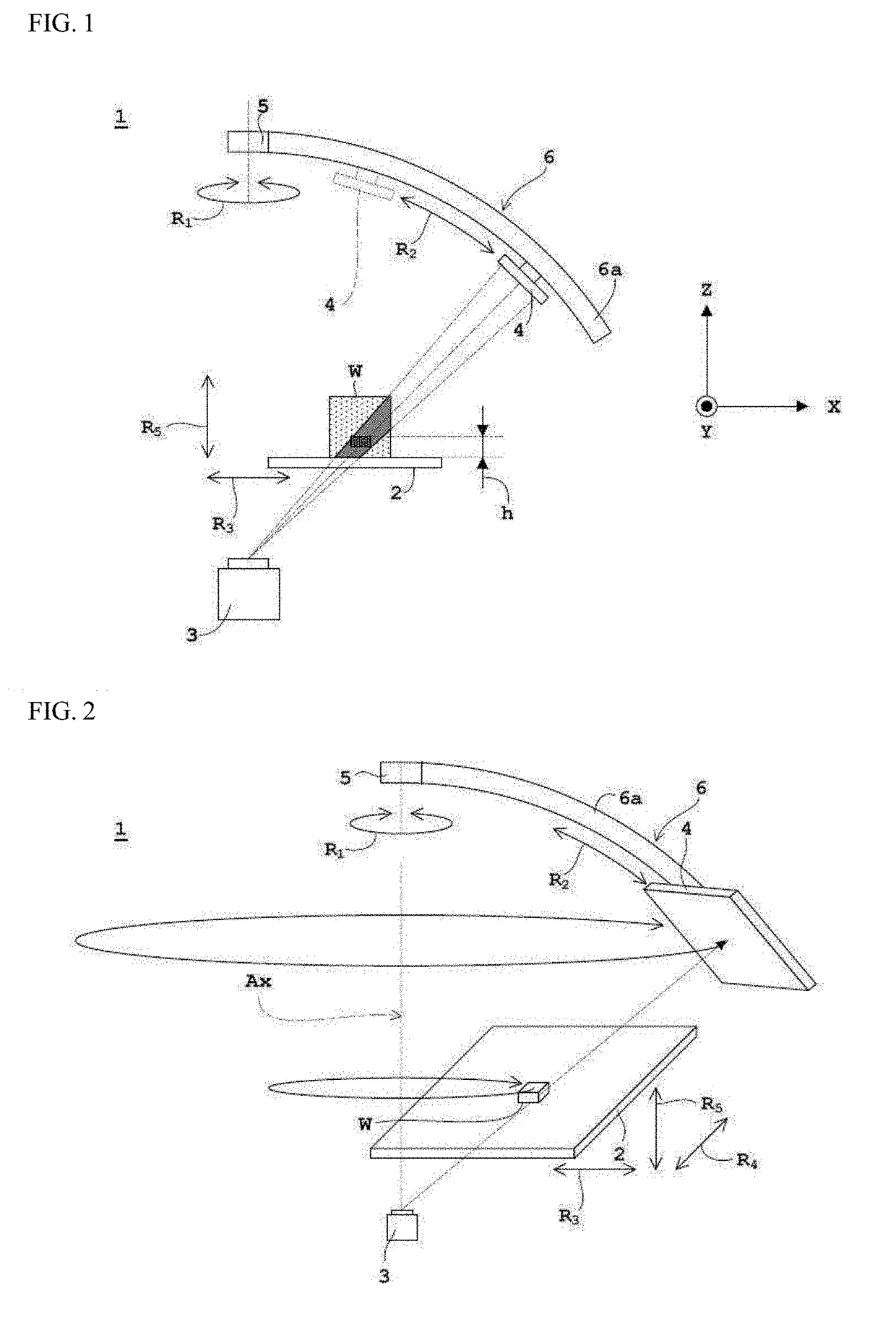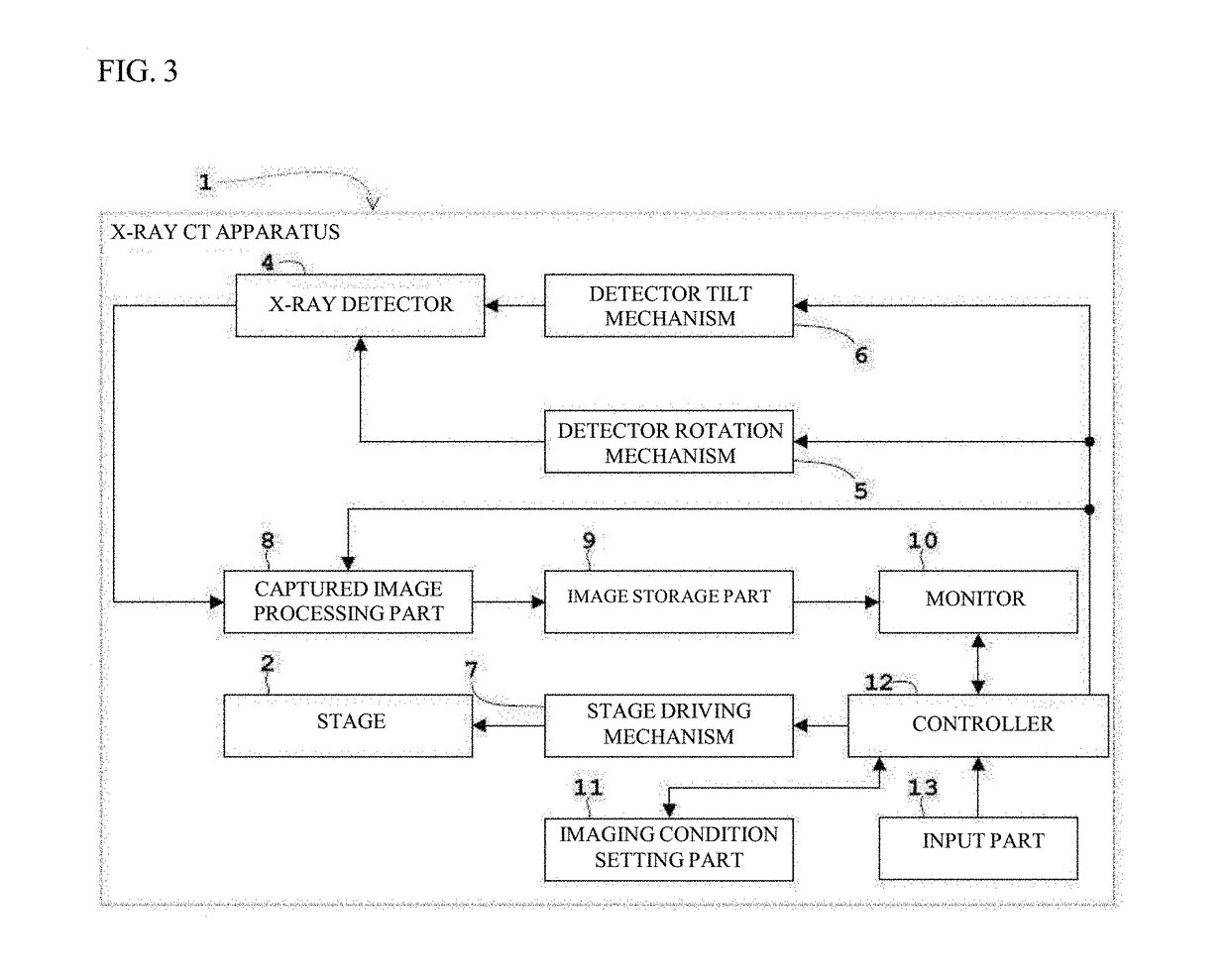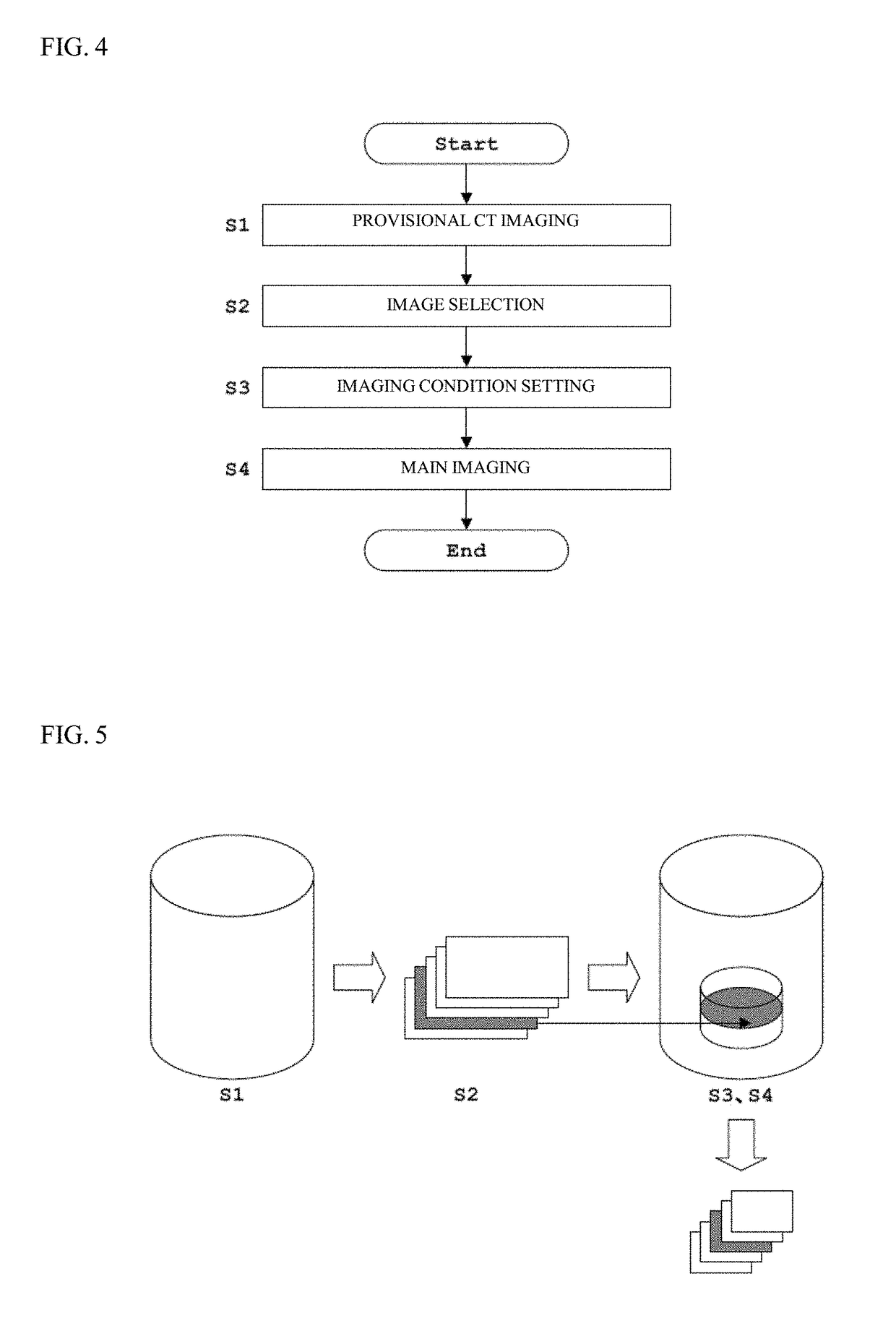Spiral computed tomography device
a computed tomography and spiral technology, applied in the direction of measurement devices, material analysis by transmitting radiation, instruments, etc., can solve the problems of x-ray tube and mounting substrate interference, difficult to photograph plate-shaped work such as mounting substrate in a magnified view, and achieve high precision and efficient performance
- Summary
- Abstract
- Description
- Claims
- Application Information
AI Technical Summary
Benefits of technology
Problems solved by technology
Method used
Image
Examples
embodiments
[0033]Embodiments of the present invention will be described hereinafter with reference to the drawings. FIG. 1 is a schematic block diagram of an X-ray CT apparatus according to an embodiment. FIG. 2 is a schematic perspective view of an X-ray CT apparatus according to an embodiment. FIG. 3 is a block diagram of an X-ray CT apparatus according to an embodiment. In this embodiment, an X-ray CT apparatus will be described as an example of an X-ray CT apparatus, and a micro-focus X-ray CT apparatus capable of observing the three-dimensional structure inside an object (work) at high magnification will be described as an example of an X-ray CT apparatus.
[0034]As illustrated in FIG. 18, an X-ray CT apparatus 1 includes a stage 2 on which a work W is mounted, and an X-ray tube 3 and an X-ray detector 4 disposed facing one another so as to sandwich the stage 2 there between. The X-ray detector 4 is not particularly limited and may be, for example, an image intensifier (I. I.), a flat panel...
PUM
 Login to View More
Login to View More Abstract
Description
Claims
Application Information
 Login to View More
Login to View More - R&D
- Intellectual Property
- Life Sciences
- Materials
- Tech Scout
- Unparalleled Data Quality
- Higher Quality Content
- 60% Fewer Hallucinations
Browse by: Latest US Patents, China's latest patents, Technical Efficacy Thesaurus, Application Domain, Technology Topic, Popular Technical Reports.
© 2025 PatSnap. All rights reserved.Legal|Privacy policy|Modern Slavery Act Transparency Statement|Sitemap|About US| Contact US: help@patsnap.com



